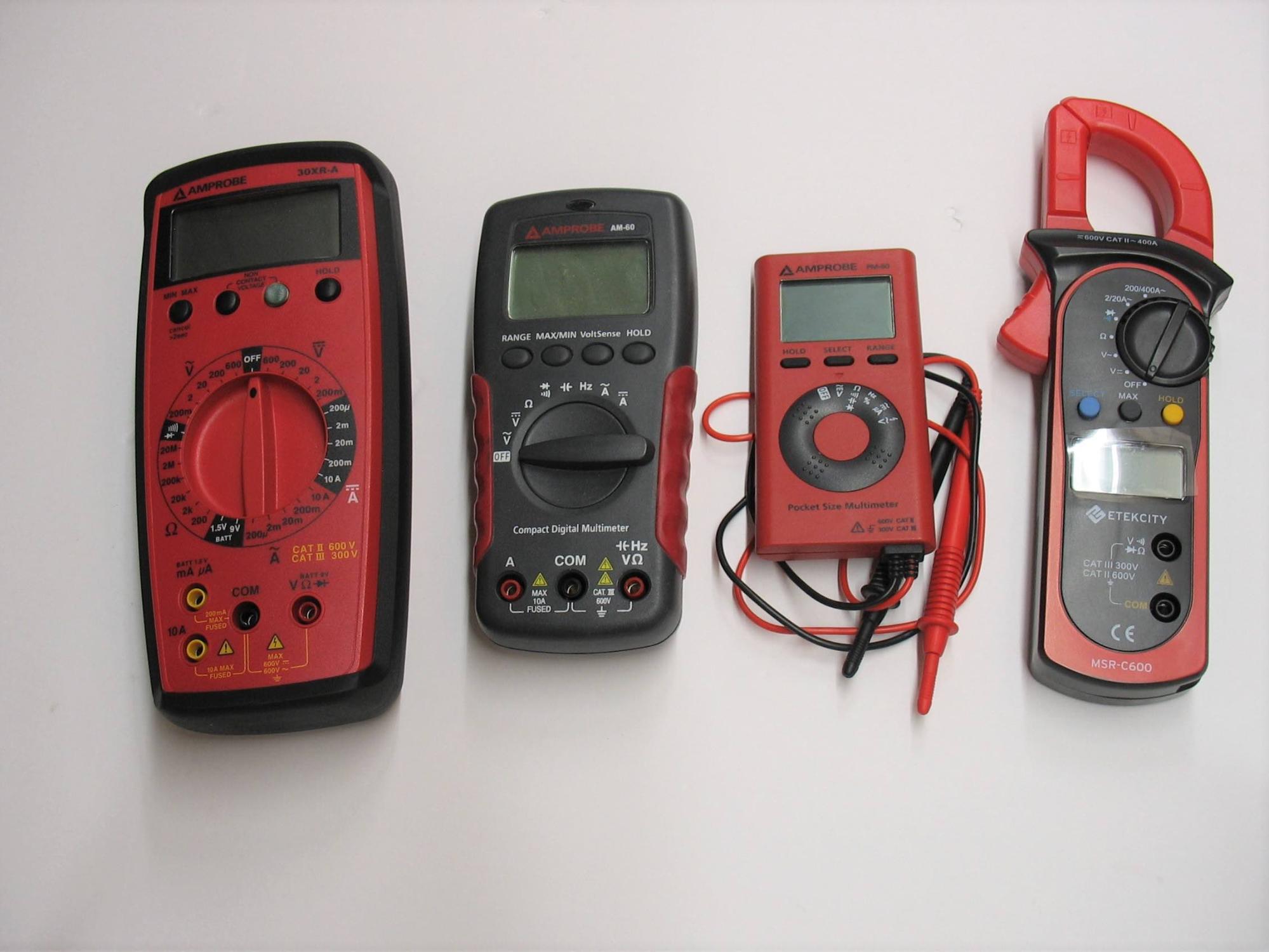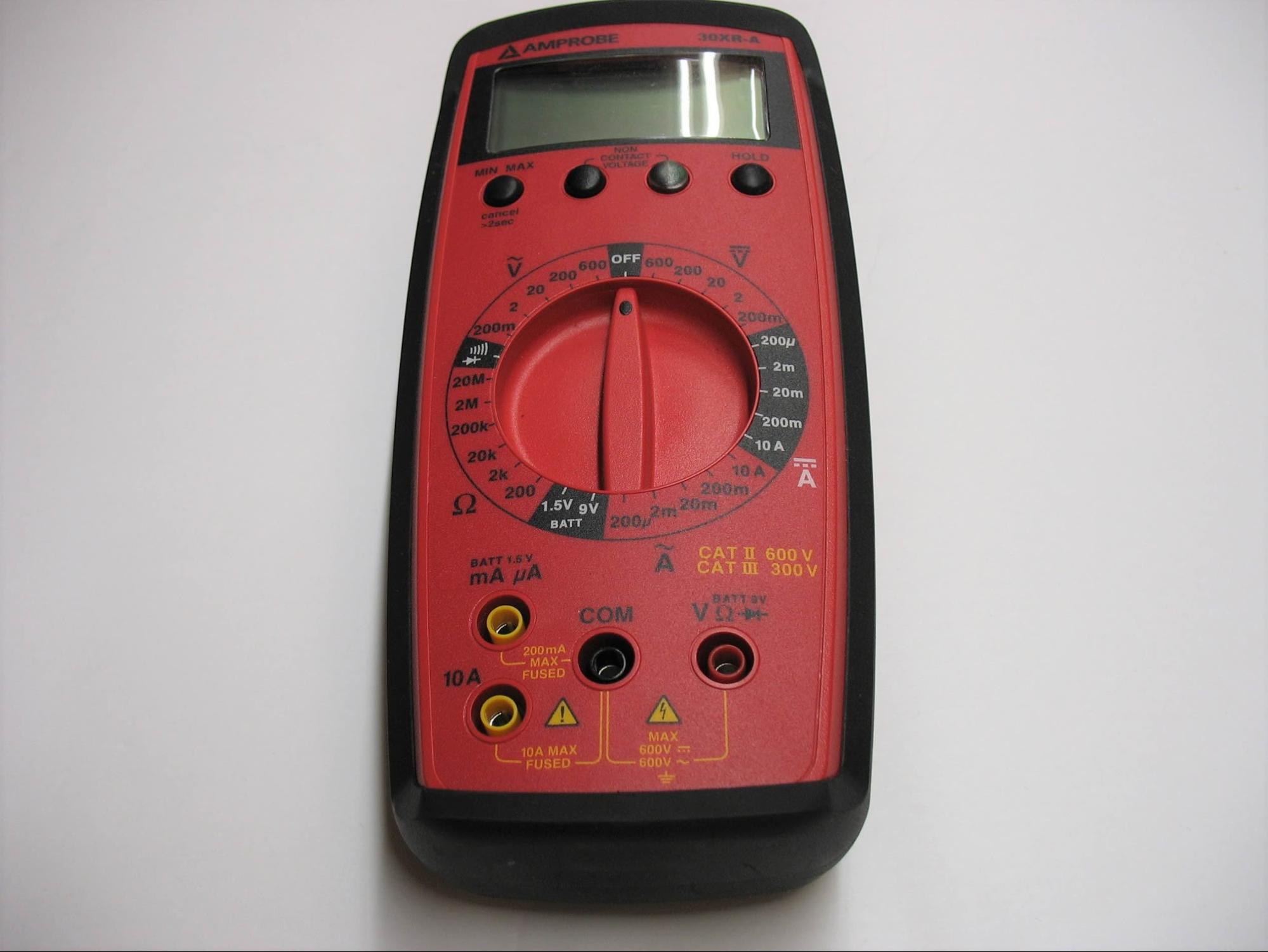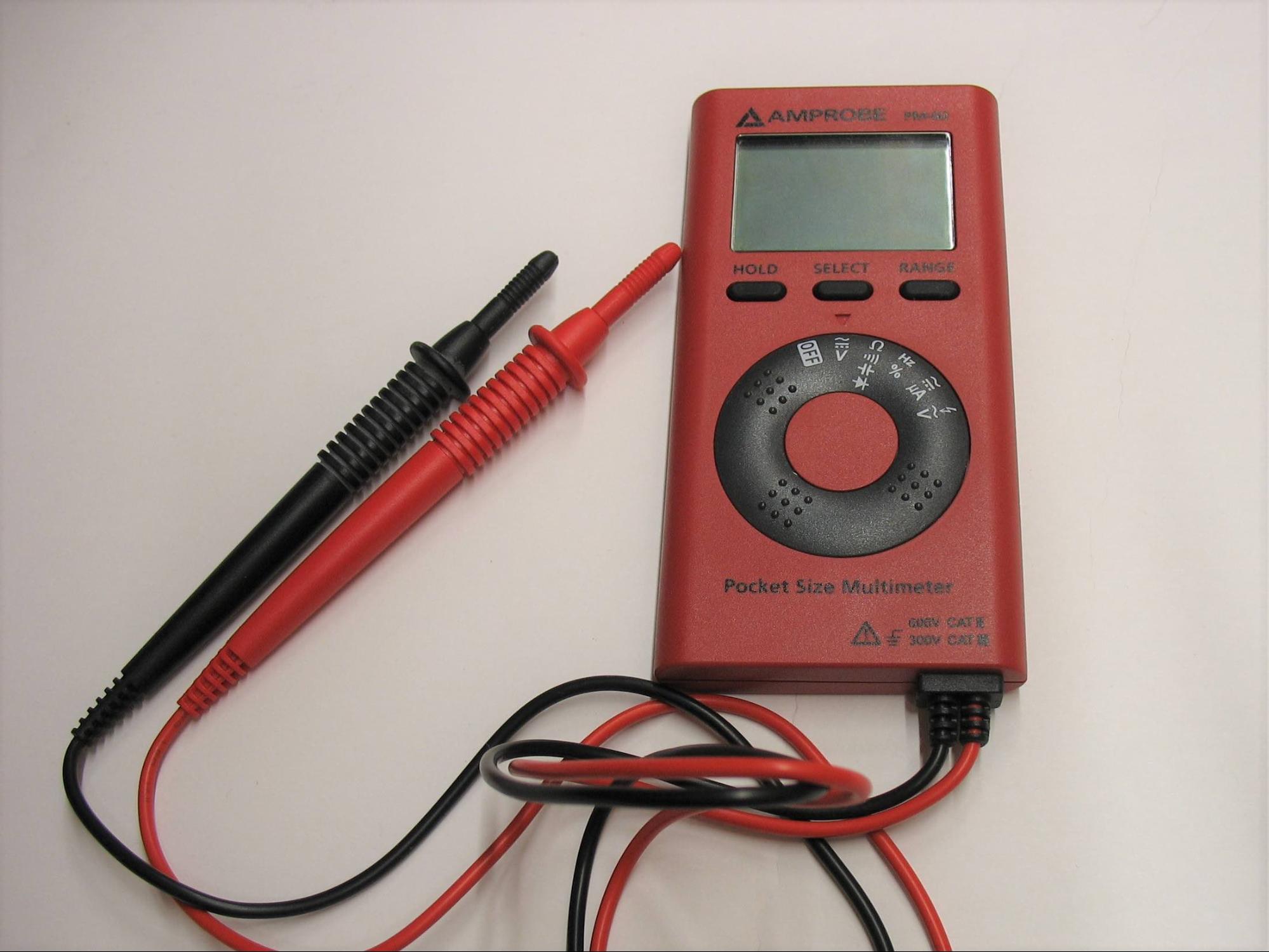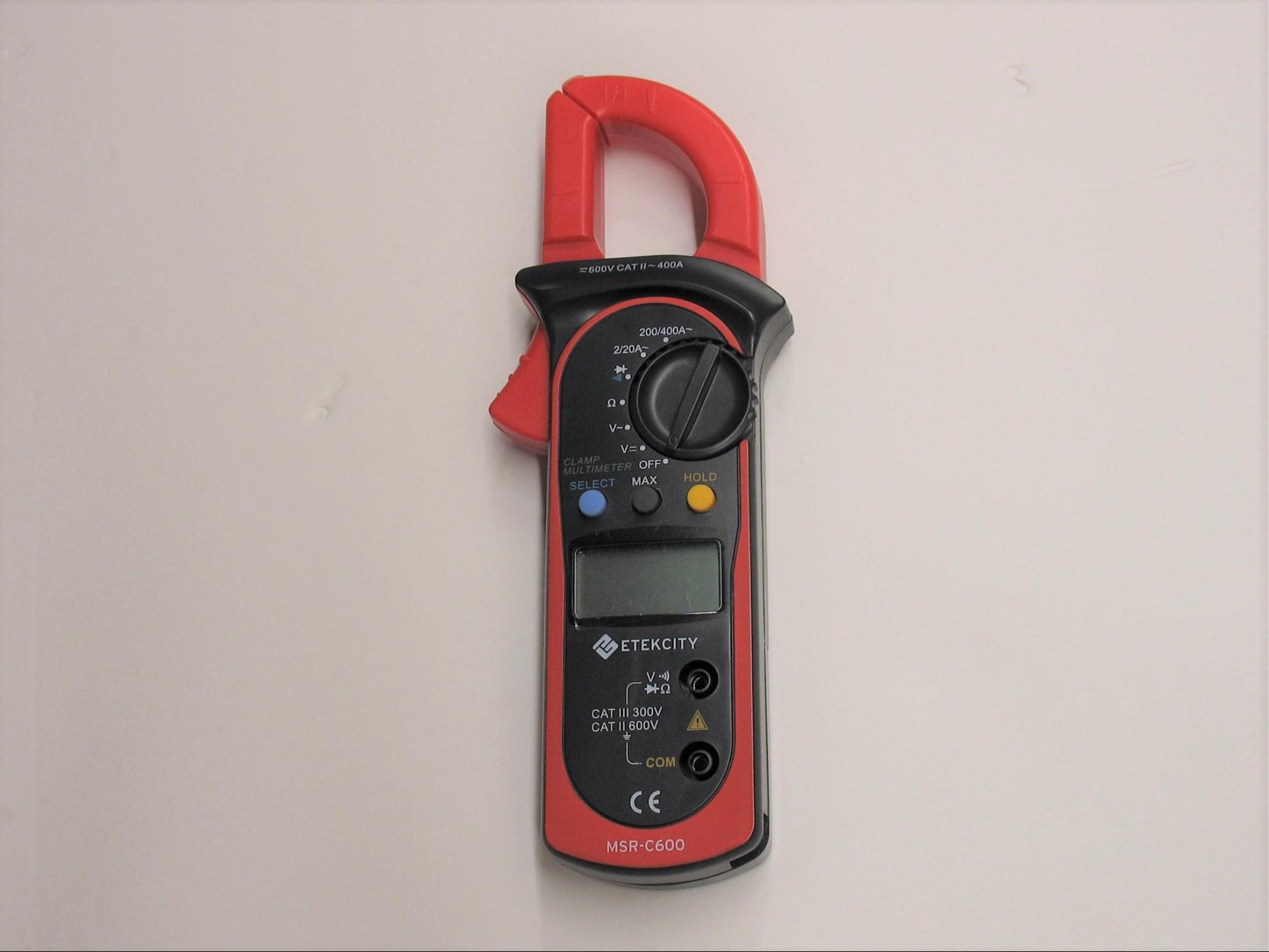Recognizing the value of a multimeter is a great first step. It’s important to know why a meter may help to save time during design and troubleshooting, and therefore save money.
Just as important is the next step of understanding the wide assortment of meters, and the unique situations in which each one may prove to be the most useful tool of choice.
Different Multimeter Types Explained
Most technicians and engineers who are exposed to any field of electronics probably already know the value of a multimeter. In a previous article, we looked at a few benefits of a multimeter for other professions as well – most of them benefitting from the voltage measurement function.

Which is overwhelmingly red!
The next step is to recognize why there are so many specialized forms of voltmeters and multimeters.
There are a lot of ways to categorize meters since each has unique traits, but I will choose to split them loosely into three distinct categories and do my best to honor each with a valuable discussion of why each one may be an ideal choice for certain fields and professions. These categories will include ‘benchtop’, ‘hand-held’, and ‘special purpose’ meters.
A Couple of Key Definitions
First, to clarify a couple of basic terms that will appear:
Accuracy
‘Accuracy’ – how close a measurement is to the actual value. If the voltage of a battery is 9 volts, and the meter reads 9 volts, this is an accurate reading. If the voltage is actually 9.12 volts, and the reading simply says 9 volts, it’s still accurate, but it doesn’t seem to have very many details of precision.
Precision
‘Precision’ – how many decimals are displayed to show that actual value. In the real world, there is no such thing as 9 volts. It’s probably like 8.9875, or maybe 9.017. Likely very close to 9, but not exactly.
A precise meter will show more and more digits. But precision does NOT mean accuracy. It may show a lot of digits, but they might be wrong. The best meter would have many decimals of precision and calibrated accuracy.
Benchtop Multimeters
This category is likely the least familiar to people but has the longest history. These meters are usually found with a footprint that would take up about 1 sq ft on the top of a workbench, with a height of 2 to 3 inches. They include a display consisting of 7-segment LEDs (or newer color displays) with an array of buttons on the front.
These meters are desired for high-precision testing and design labs due to their extra decimals of precision above handheld meters. They are also designed to hold their accuracy for a longer time and allow periodic calibration to ensure that they are giving the technician an exact value.
They are expensive, and a bit bulky for everyday use when mobility is key. But for a permanent bench setup, they are highly sought after.
They will be the meter of choice for military, avionics, semiconductor, and communication system electrical design and testing. You would likely spend hundreds or thousands of dollars for this kind of excellent quality meter.
Handheld Multimeters
This category is the stereotypical voltmeter candidate. When you need to test an everyday component or check the voltage of a car battery, this is the ultimate handy tool.
The variation is usually just in the size of the unit. They will almost always have a round dial in the center to select the function, a liquid crystal (LCD) digit display above the dial, and the plugs for test leads right below the dial.
More robust meters with a wider array of functions tend to be a bit larger, while some can fit easily in a pocket, great for low-risk, low-investment quick testing.

A digital multimeter, although this one does not automatically range through relative scales of each function, in other words, it’s non-autoranging.
When you examine the test lead connection ports, there will be a couple of choices. It will either have two ports, a red and a black, or it will have four ports, three reds and a black. The 4-port meter is built for testing small currents in a circuit, usually in small PCB or breadboard circuits.
Although I don’t often use this function, I have found it invaluable for many home-built circuits, and would highly recommend it for those purposes. Later on, we’ll look at the current test function, and this is important because a little bit of misuse can damage the current meter.
The meter with only two ports cannot measure current in this way. However, this configuration can often be found in clamp-on multimeters. These can measure current, just not through the test leads.

The ‘pocket-size’ kind of meter. Maybe not the most durable or functional, but it works well.
Industries may dictate what protection levels are necessary for meters, and that may lead to only the expensive ones allowed in these settings.
However, for general everyday use, don’t shy away from the cheap ones. I can’t speak for all of them, but I have a small meter that was given to me a couple of decades ago, and it produces readings every bit as accurate as my good Amprobe meter. There is such a wide array of products available, they can cost less than 10 dollars, or a couple hundred dollars for a high-quality Fluke product.
Specialty Multimeters
I’m sure I can’t list every special function meter that has been built for custom purposes, but here’s the usual lineup of suspects. The clamp or fork style current meter is common for industrial use where large currents and voltages are in use.
The currents driving motors would be far too large to ever test through a typical meter, and it would be extremely dangerous to be exposed to such a high energy output test point. These special meters can measure current by simply being placed around a safe, insulated conductor.
Typically they just measure AC current, but some of them also measure small DC amperages as well, these are very useful.

A clamp style multimeter, mainly used for measuring AC current, but it also measures the typical voltage, resistance, etc.
Most clamp and fork meters also have the dial and test lead ports that can measure all of the other normal functions as well.
Some multimeters have unique semiconductor measuring properties as well, but these are rare since most of the time semiconductor parts are soldered on a PCB making them harder to test with meters. Usually used for transistors, they can measure polarity, gain, and leakage current. Usually, they’ll have a small set of 3 or 4 little holes labeled with letters E, B, and C in some order. These work well for bipolar transistors, and you wouldn’t use this function very often, but sure handy when you do need it.
Another handy test tool may loosely be called a ‘multimeter’ except it doesn’t measure live circuits, so it can’t measure voltage and current.
This small circuit tester is made for measuring a vast assortment of devices and components and gives you information that most standard meters won’t have – like the series resistance of capacitors or the inductance of an inductor, the pin layout of a transistor. Very handy tools and they can cost less than $20.
Everyone can use a multimeter. If you don’t have one, it’s fine to start small and inexpensive. If you have a special use, it’s likely that you will need to invest in the right tool for that job.
If you have no idea what to get, start simple and you might find that someday, like myself and many others, you will have a meter for every room of the house, ready for the one time you might need it.
Like using multimeters? We do too.
Here are the other articles in this multimeter series:
- The Importance of Multimeters
- How to Choose the Right Multimeter
- How To Measure DC Voltage With a Multimeter
- How to Measure AC Voltage With a Multimeter
- How to Use a Multimeter to Measure Current
- How to Measure AC Current Using a Clamp Meter
- How to Measure Resistance with a Multimeter
Copyright Statement: The content of this website is intended for personal learning purposes only. If it infringes upon your copyright, please contact us for removal. Email: admin@eleok.com
